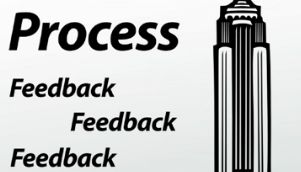Quality School of Management: Kaizen & Reengineering Approaches
After you watch the video and know the material, click HERE for the quiz.
All companies strive to improve and deliver a better product. That single thought is driven by the quality school of management. In this lesson, we will learn about that school of thought and how it evolved.
It's All About Quality
When was the last time you bought something and were not concerned about its quality? When I say that, I do not mean small items like dishwasher detergent or paper plates, but rather an important item that took some thought before you purchased it. In today's world, everyone is concerned with quality, primarily because money is tight and a product can be reviewed by hundreds of people on the Internet. If the product is not of good quality, it will get bad reviews that can be read by future potential customers. With that in mind, manufacturers have to make sure they produce a quality product in order to have any chance of long-term success.
 |
The History of TQM
First, we need to get an understanding of what TQM is. TQM is an all encompassing and structured approach to how organizations and their processes are managed and seeks to improve the quality of the final products and services through continued refinements in response to continuous feedback. That is one heck of a definition, but in more easily understood terms, it is a belief or ideal that the entire company and its products or services need to be continually refined and improved to provide the best possible products or services.
 |
Way back in the day, products would be produced and then inspected to see if they were of the quality required by the manufacturer. As competition grew, so did the need for higher quality products, which then grew into the need for formalized quality control departments. Now we had quality managers running departments that checked quality to make sure the product going out the door was of the quality the company, and the market, required. However, it would take a major world event for TQM to really kick into high gear.
After World War II ended, the Japanese economy and manufacturing system were in shambles. The Japanese saw this issue and realized that to compete in the global economy, and to rebuild what was left of their manufacturing abilities, they had to focus on producing quality products as efficiently as possible. It became the single focus - and, some say, obsession - of Japanese manufacturing sectors. As the Japanese focused on quality, they began to rebuild their economy and manufacturing and slowly grew into a world manufacturing power. As Japan grew, other countries began to take notice and realized that Japan's approach to manufacturing, TQM, was making it a very strong competitor; thus it was something other countries soon adopted.
By the early 90s, countries around the world were working with TQM systems to ensure they would not get left behind. TQM became the accepted norm for products and services so that customers would be thrilled with the products they purchased.
 |
But What Really is TQM?
The very essence of TQM is the customer-supplier interface. TQM realized that communication to and from the customer was vital in producing the best product possible. That communication helped refine processes within the company as well as change company culture to be more customer focused and quality driven. Gone were the days of just making sure the final product was of good quality (items like TVs, toasters and cars), and now it was more about the total customer experience (purchasing, shipping, customer service, warranty and repair), driven by customer feedback.
Ah, but you might be saying, what does the company do with the feedback, or how do they process it so that when they get it, they can improve as a company? Good question. What companies that have a TQM mindset do is take the feedback they receive and plug it into a defined process to fix or address any issues they might have. That process looks something like this:
- Title: The process is given a title to ensure everyone understands what the company is trying to improve.
- Purpose: The purpose of the refinement is clearly defined so everyone knows why the company is undertaking the improvement.
- Scope: The beginning and end of the process are defined.
- Inputs: This is what will be transformed, such as a faulty switch or poor customer service response times.
- Outputs: These are the desired goals or results of the process.
- Controls: The company uses controls to manage the process so it stays on track.
- Resources: These are what the company or team will have at their disposal to ensure the change can be supported.
Companies use feedback to fix or augment issues with products or services. 
Thus, the company produces a product or service, gets feedback then takes that feedback and puts it into the process we just spoke about to fix, repair or augment the issue that is arising. Here's an example to help you understand this a little more clearly:
- Title: Customer service response time
- Purpose: To lower customer service response time from five minutes to two minutes
- Scope: The project will start on Jan 1 and end on Jan 30
- Inputs: Customer service policies and training
- Outputs: Improved customer satisfaction with our customer service team
- Controls: Timed customer service response time once the program has been refined to ensure our response times have been reduced
- Resources: Customer service team, trainers, software, IT department and customer participants
So as you can see, the feedback drives the need to refine a portion of the company, and the process we just talked about will help get to that goal.
Reengineering
It's easy to see that when a company decides to go through this process, they are reengineering themselves, or a portion of themselves. In many ways, they are breaking the mold, seeing what was wrong with it then making a new mold that will hopefully help the company deliver a higher quality product. This is not easy to do, and this is also where culture shifts occur. Parts of the company might be fine with the way they are doing their job, and it takes a shift in their thinking and a shift in culture to make this happen. What if you were the owner of a company and you thought you made the best product in the world, and then got feedback it was not as good as you thought it was? Would you have to have a mindset shift in order to comprehend that and want to make a change? Would that also lead to a change in the culture of the company? You bet it would.
 |
Kaizen
As we talked about earlier, TQM started with the Japanese rebuilding themselves after World War II. What we did not discuss is that they did not call what they were doing TQM, but rather Kaizen, which means a philosophy of continuous improvement, working practices and personal efficiency. They believed the company was an organism that needed to have all its parts working to improve how it functioned. That improvement was not limited to just what the company needed to do, but also how employees could do their jobs better and more efficiently. It put everyone in a position of accountability to be the best they could be and was not limited to just having management decide to improve a process but rather demanded that the entire company continually work to do their jobs better, even if they were not asked to.
Lesson Summary
So as you can see, TQM is all encompassing and takes an entire company's commitment to quality. It is the driving force behind how all companies view their customer experience. As it is deployed, company cultures will change, new processes will be developed and everyone in the company will need to work to be more efficient at what they do so quality can indeed improve. Indeed, as the Internet brings us all closer and closer together, and we can easily share our likes and dislikes about products, TQM will continue to evolve as well to keep pace.